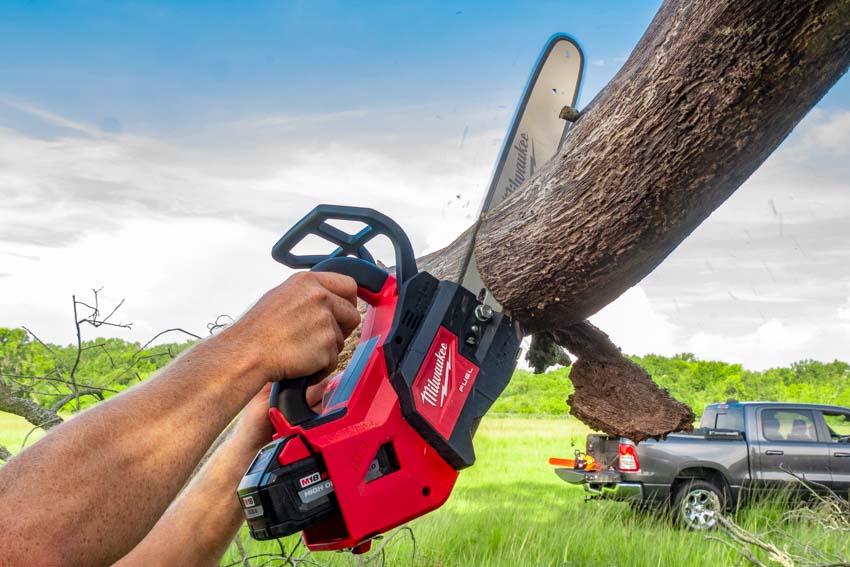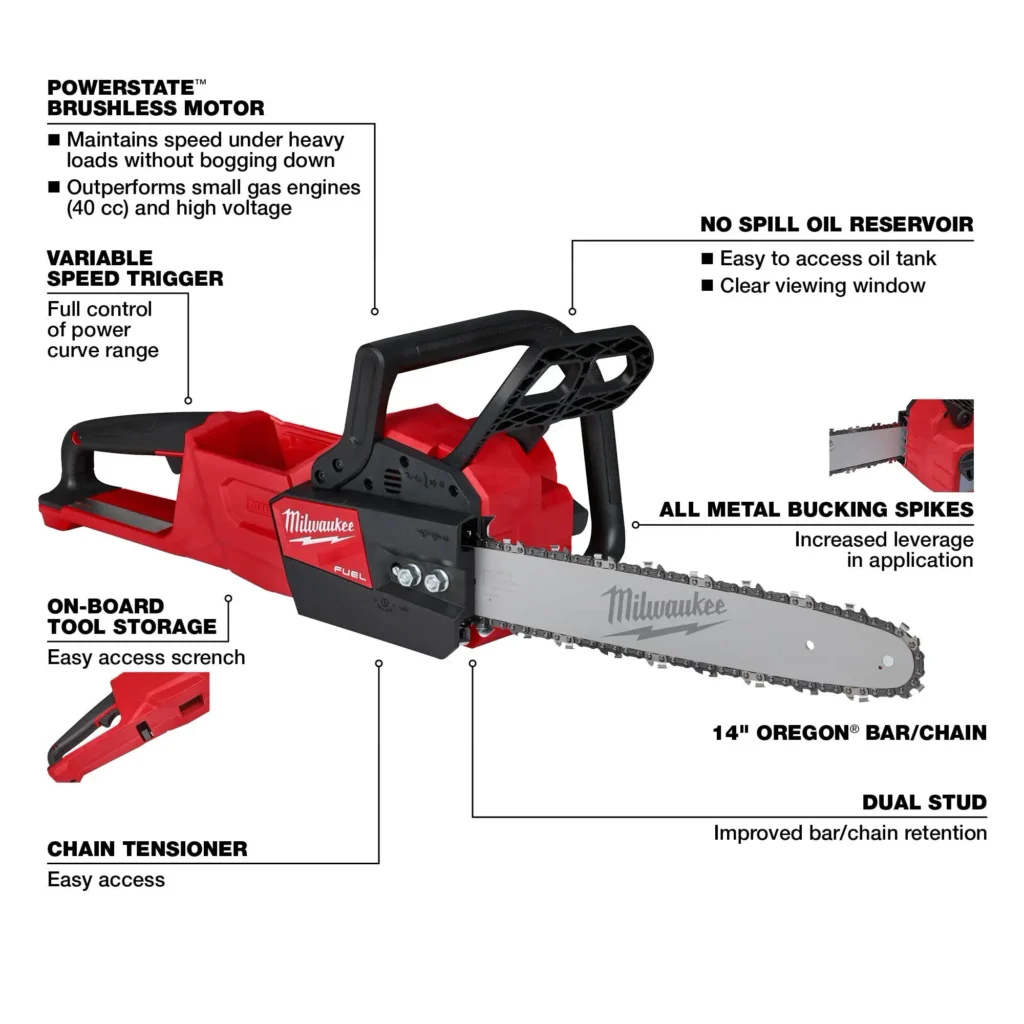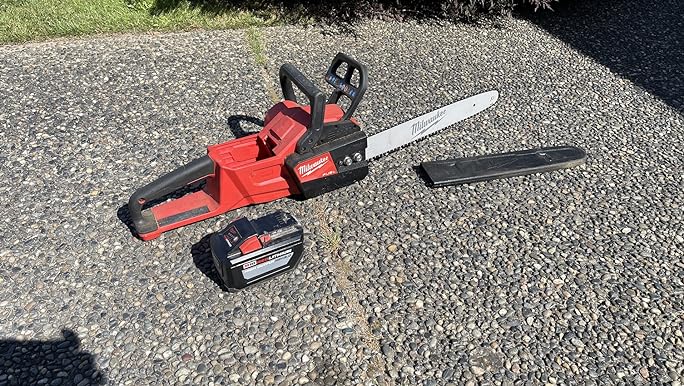Milwaukee, apart from delivering a series of chainsaws to meet different needs, is a trademark of quality and durability. Whether you recognize yourself as a real pro or a rookie satisfied with your yard work, there is the Milwaukee chainsaw model for you, ready to help you with every requirement of your duty. While it is a good thing that different models (more or less powerful) are available to customers, choosing the right one from the lot might not be an easy task. Worry not! This guide will guide you through the process of making the right decision.

Step 1: The Choice of Power – Gas or Electric/Battery?
The first crucial factor is the power source: natural gas, electric/battery. Here’s a breakdown of each option:
Gas-Powered Chainsaws: The beasts come with kings of power and blades that seize large trees, tough hardwoods, or challenging projects. Cordless gas saws of a particular type are highly portable and are an ideal choice for places that are from or inaccessible from an electric power source. Nevertheless, these types of fuel engines should be maintained regularly, meaning they mix fuel and oil, produce noise and emissions, and have more weight than other vehicles.
Electric/Battery Chainsaws: There is an extensive range available, from corded to battery powered. Electric chainsaws or battery-powered chainsaws have these advantages, such as being quieter, lighter, and easier to maintain. Chorded models have an endless flow of power if you are adjacent to the outlet, whereas cordless models are good when it comes to managing of a vacuum and ensuring that one can move around without tripping on the cord. Yet, the chainsaws that are operated by electric are said to have lower cutting power and are therefore designed for light cutting tasks like limbing, pruning, and cutting firewood which you use on an occasional basis.
Step 2: Look closely at the Chainsaw Machine in front of you and see what it needs to be accomplished.
Once you’ve chosen your power source, delve deeper into the specific task you’ll be using the chainsaw for:
Tree Felling: For handling larger trees (trunk’s diameters above 18 inches), the first option should be power. Battery-powered chainsaws are better, but if you choose a gas-powered model, it should be more durable.
Pruning and Limb Removal: The nexus of manipulation and convenience prevails. Think about an electric or battery powered chainsaw like the Milwaukee M12 Fuel™ HATCHET™ Pruning Saw for making precise cuts in spaces that are not easy to access.
Firewood Cutting: Risk and reward should be nicely balanced. The best middle ground is the one in which power and handling are in delicate balance with each other. A mid-range gas chainsaw with the a bar between 16-18 inch and being a model of Milwaukee M18 FUEL™ Chainsaw can fit almost all firewood splitting tasks.
Carving and Artistic Projects: On the other hand, for detailed carving and sculpting, you will need an electric chainsaw that has a weight since your hands will be heavy. The electric chainsaw bar length should be shorter (10 to 14 inches) so that you can have an easy time controlling it. In cutting power, the Milwaukee M12 FUEL™ HATCHET™ Pruning Saw has minced it to nothing.
Step 3: The following list emphasizes some important aspects to ponder upon:
Now that you know the power source and task, explore features that enhance your experience:
Bar Length: Select the grinder bar surface according to the frame of the timber. Longer bars can deal with thicker cuts but reduce manoeuvrability.
Chain Pitch: This means the space between links. These loose pitch (.325″) allows cleaner cuts, while tighter pitch (.375″ or .404″) guaranteed effective movement on large items.
Chain Tensioning System: Try to find a hardware free chain tensioning system to make it easy to make initial adjustments.
Safety Features: Milwaukee chainsaws have a slot of safety mechanisms such as quick chain brakes, hand guards and bucking hooks that allow more a full control of the machine.

Consider these features paramount.
Step 4: Additional Considerations
Beyond the core factors, consider these additional points:
Durability: Milwaukee chainsaws are recognized for their beastly nature, yet if you expect heavy-duty cutting, select the professional model.
Noise Levels: Electric chainsaws or battery-powered ones will not emit as much noise as gas-powered ones, a factor that plays an important role in areas where using chainsaws would not be allowed or when used privately at residences.
Vibration Control: Try to get something that has anti-vibration qualities to allow the user to remain comfortable throughout long use.
Warranty: Milwaukee warrants this outstanding quality in the long run. Before purchase, be very clear about the warranty coverage.

Making the Final Cut
You’ll know these steps and your specific demand by heart so that you will be able to make use of the right Milwaukee chainsaw to get your job done at any time. Remember, safety is paramount. Make sure you wear the right PPE, which includes eye protection and face shielding, and get into the habit of safe work practices before you start a chainsaw.
READ MORE : The Various Uses and Types of Chainsaws
